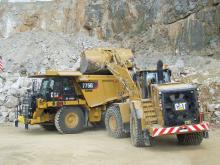
Bentley Systems is taking further steps ahead with regard to digital twins, assisted by its partnerships with Topcon Positioning and Siemens. The firm is utilising digital twin cloud services, which allow clients greater access to so-called ‘dark data’, historical design and build information from BIM models that would otherwise be stored but not used.
By adding 4D depth to BIM models, Bentley believes it can provide a valuable tool for its customers. Greg Bentley, CEO of Bentley Systems said, “Digital twins enable better decision-making across a project timetable. You can ensure that your data is verified.”
With the added functionality of time, digital data can be reused later, providing extra value. Further benefit is gained through being able to add time as a function to the BIM model, to generate digital twins. And he said, “With digital twins, the models are evergreen.”
The added functionality of time allows better utilisation of that original BIM model of a project. Greg Bentley said, “We can view the history of a project and we are able to take a project further with digital twins.”
The new Capital Asset Lifetime Management (CALM) system has been developed with Siemens. This provides a crucial tool for asset managers, allowing them to access BIM data to be utilised over time for the maintenance of a structure during its operating life. Using the technology is expected to cut maintenance costs significantly as issues can be identified and addressed early on, before they become problematic. Planned maintenance also allows for work to be carried out at times when this will cause the least disturbance to commerce and traffic, such as at weekends or during the night.
Greg Bentley explained that utilising BIM data is the key. “Opening up the dark data over time means we’re advancing BIM and GIS and adding more value. If the data is no longer dark, you’re going to be able to use it for assessment.”
However, the digital twin concept does not mean that the entire data set has to be utilised. It can take just the information needed for asset maintenance only. As a result, the digital twin file for a specific purpose does not have to be a huge and unwieldy dataset.
The firm’s closer partnership with Topcon Positioning will play an important role in the future. The two companies have established a partnership business, Digital Construction Works, intended to provide expertise to clients with a view to tackling this workflow problem. Greg Bentley said, “We are prepared to help on any projects.”
According to Bentley, BIM processes are becoming more widespread in the construction sector for major projects. Greg Bentley continued, “There is growth now in the use of digital twins,” though he added that they are still in their infancy. But the potential is significant for owning and operating systems and structures once they have been built. Using the as-built data provides a valuable source of information for maintenance when matched with time factors. And Greg Bentley said, “You can predict performance before it happens.”
Referring to bridges for example, Greg Bentley said, “A digital twin allows sensor data to be downloaded and analysed from a bridge to make decisions about maintenance, without having to send someone to the bridge.”
Using the AssetWise tools, users can access models that give a good idea of the condition of a roadway or structure, optimising maintenance planning. Sensors feed in additional information and there is the option to use drones to deliver extra data. Features such as road surface cracks or corrosion of steel bridge members can be assessed to provide an accurate analysis of the deterioration of surfaces or key structural components. Crucially, this can be done without having to put an inspector in a potentially dangerous working environment to do so, such as being close to live traffic or using a work platform hanging under a bridge.
Digital representations can be continuously updated, making it easier to understand change over time. “It gives you the ability to understand information in a more comprehensive way. Digital twins are meant to go from planning through operations.” Greg Bentley explained too that as the firm has focussed on open source systems, this allows data to be imported from legacy systems or from other suppliers such as Autodesk or Hexagon for example.









